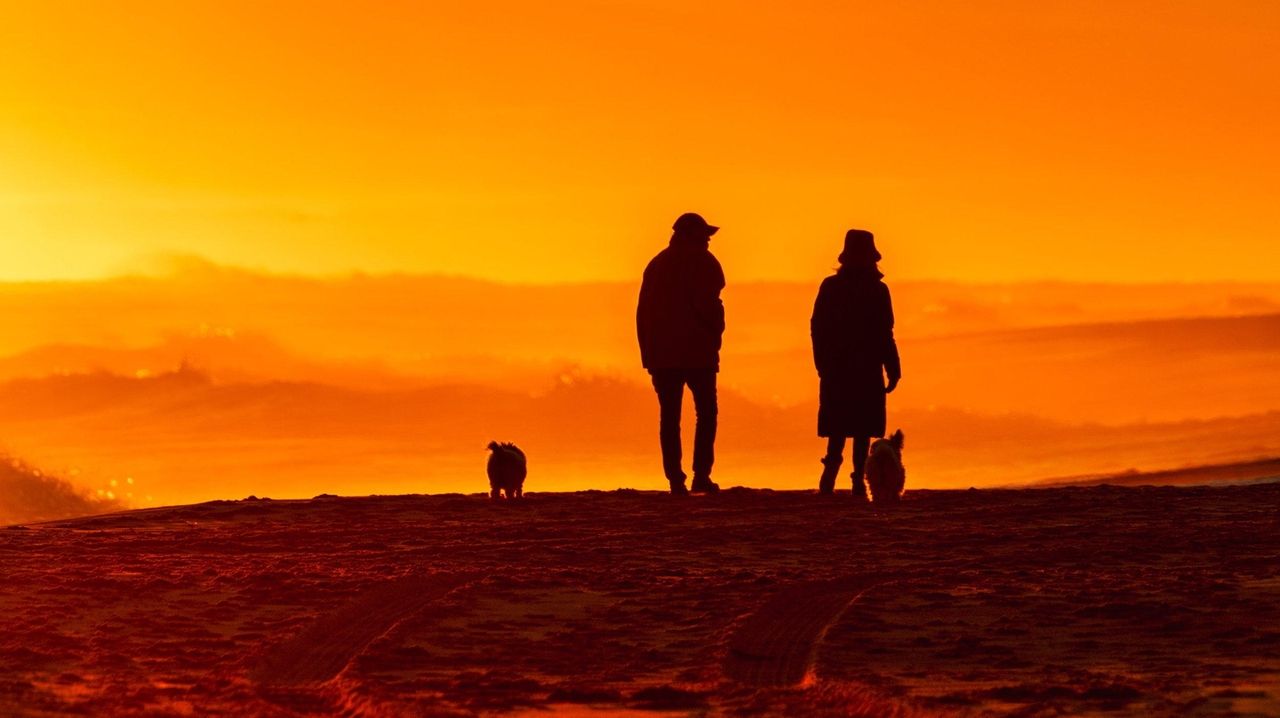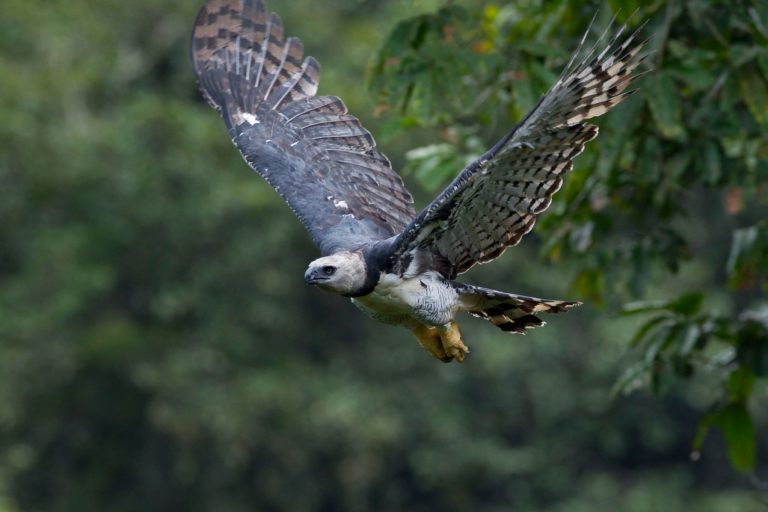The John J. McCarthy Observatory behind New Milford High School will host a free star party on Jan. 14 from 7 to 9 p.m.
Enjoy the sights of the winter night through a variety of telescopes. This is a weather dependent event.
January programs at the Gunn Memorial Library in Washington
The Junior Library at Gunn Memorial Library is hosting a variety of fun activities to beat those winter blues! Learn how make a snowflake and create your own snow globe! We will also have a Valentine’s Dance Party with special guest Sandra Hernandez.
Jan. 21 – 1 p.m. Valentine’s Dance Party with Sandra Hernandez – Dance party is a celebration of music and movement, perfect for children ages 7 and up. Kids can practice basic ballroom moves, dance movement skills, creative expression, coordination, and self-control while dancing to a cute valentine song. Fun for the whole family! Registration is required. Please register on our website, www.gunnlibrary.org.
These programs are free and open to all. The Gunn Memorial Library is located at 5 Wykeham Road at the juncture of Route 47, opposite the green in Washington.
‘Pour Your Heart Into Art’ paintings by Christy Bonaiuto at the Sherman Library
The Sherman Library is starting the new year with the art show “Pour Your Heart Into Art,” paintings and photographs by Christy Bonaiuto. Building upon her photographic artistic skills, Bonaiuto’s stunning pour paintings, abstract acrylics and photographs explode with vivid color and movement.
Come meet the artist on Jan. 13 from 6 to 8 p.m. The show will be on display at the Sherman Library to Feb. 22 both at the Library and on their website, www.ShermanLibrary.org.
Bonaiuto has been a photographer for over 15 years, expanding from nature photography to people, and enjoys capturing special moments. She is known for her family portraits and peony photographs, capturing different stages of the peony blossoms and their beauty in different lighting.
When the pandemic hit, she had a two-year old at home who would ask her to draw images and enjoyed watching painting videos. Bonaiuto started painting and experimenting with different techniques and mediums. Her passion has evolved from photography and now includes paintings. She loves being inspired to create one-of-a-kind pieces that stand out for all to enjoy.
Bonaiuto has a bachelor’s degree in Journalism Layout Design with an emphasis in public relations from the University of Oklahoma. She is a member of The Great Hollow Photographers Club, Sherman Artists Association and Gallery 25 in New Milford.
For more information about this show and the Sherman Library, visit www.shermanlibrary.org.
Gunn Memorial Library in Washington hosts Zoom lecture on ‘Connecticut’s Indigenous Communities’
Join the Gunn Memorial Library on Zoom on Jan. 16 at 6:30 p.m. for the virtual lecture presentation “Connecticut’s Indigenous Communities: An Introduction to Their Histories and Cultures” with curator and author, Lucianne Lavin. Registration is required to attend this free Gunn Museum virtual program. Please register at www.gunnlibrary.org/gunn-museum/upcoming-programs/.
Eastern North America was not a “howling wilderness” as described by the early English settlers. It was a built landscape, managed by the first settlers of the land, its Indigenous peoples. Indigenous communities have long, rich histories that extend back to when they shared Mother Earth with mastodons and other extinct animals.
Through those thousands of years, Native Americans became experts in their natural environments, a necessity for their physical survival as well as their spiritual obligation. Our first environmental stewards, Native American communities had long been managing their physical environments to enhance plant and animal populations as well as their human communities. Indigenous folklore and sacred stories promoted this ecological balance. This PowerPoint presentation provides a window into tribal history and culture before and after European settlement, including that of the Weantinock and Pootatuck peoples in whose ancient homelands the town of Washington now resides.
For more information visit www.gunnmuseum.org or contact the Gunn Historical Museum in Washington at 860-868-7756 or [email protected].
‘Artwork by Individuals with Special Needs’ exhibit at Roxbury library
“Art4All: Artwork by Individuals with Special Needs,” a two-day show of work by artists with special needs, will be featured at Minor Memorial Library (23 South St. in Roxbury).
The show will be on view during library hours, on Jan. 20 from 10 a.m. to 5 p.m. and on Jan. 21 from 10 a.m. to 2 p.m., followed by a closing reception on Jan. 21 from 2 to 4 p.m.
The artists are all individuals with special needs, living in Connecticut. This exhibition is a rare opportunity for them to share expressions of their creativity. The show presents a diverse collection of unique, beautiful pieces, ranging from works on paper to 3-D sculptures.
Minor Memorial Library is handicapped-accessible. Call the library at (860) 350-2181 for information and directions.
Collage Workshops with Sarah Griswold at Roxbury library
The Minor Memorial Library in Roxbury is excited to have Sarah Griswold lead two free Collage Workshops on Jan. 28 and Feb. 4, both from 11 a.m. to 1 p.m. There is no charge for this program, but registration is required. RSVP online at www.minormemoriallibrary.org
Collage can be a way to express oneself, to think through design ideas or just to have fun with materials. Magazine images and scrap paper will be available to cut, tear and assemble on card stock of varying sizes and shapes. Please feel free to bring your own materials with you if you like.
No creativity or artistic ability is needed, just a willingness to let go, have fun and glue things together.
Call the library at 860-350-2181 or visit the website at www.minormemoriallibrary.org for more information and directions.
‘The State of Being’ paintings by Elizabeth Kaney and sculptures by Kristina Kossi at Roxbury library
“The State of Being”, an exhibit of paintings by Elizabeth Kaney and sculpture by Kristina Kossi at Minor Memorial Library (23 South St. in Roxbury) will begin with an opening reception on Jan. 28 (snow date Feb. 4) from 2 to 4 p.m.
The show will continue during regular library hours through March 11, except when the Community Room is in use for a special library program. The library is open Mondays from noon to 7 p.m., Wednesdays from 10 a.m. to 5 p.m.., Thursdays from noon to 5 p.m., Fridays from 10 a.m. to 5 p.m. and Saturdays from 10 a.m. to 2 p.m. The library will be closed on Feb. 20 for Presidents’ Day.
Minor Memorial Library is handicapped-accessible. Call the library at (860) 350-2181 for information and directions.
New Milford Historical Society & Museum anticipates unveiling new exhibit space
The introduction of new exhibit space will highlight a resumption of normal hours at the New Milford Historical Society & Museum later this winter.
The museum, located just north of the Village Green at 6 Aspetuck Ave., is now open on Saturdays and for tours. Otherwise the museum is closed during January and February for collection care and restoration, as well as to prepare new and restored exhibits.
Normal hours will resume in March and the new exhibit space is scheduled to be unveiled in late March. For more information, call the museum at 860-354-3069.
Learn about the American Mural Project at special presentation following Kent Memorial Library’s annual meeting
Kent Memorial Library’s annual meeting will take place at Kent Town Hall on Jan. 21 at 2 p.m. The Library is proud to announce there will be a special presentation immediately following the meeting by Amy Wynn, executive director of the American Mural Project (AMP). Amy will share an overview of the organization, its mission to honor work and inspire the next generation of workers, and the many programs and activities currently happening and planned for the future.
Guests will hear some of the exciting stories of how the three-dimensional mural, measuring 120 feet long and five stories high, came to be and how it landed in Winsted. The Library plans on organizing a group trip to see the AMP in Winsted in the spring.
For more information call 860-927-3761 or email [email protected].
Kent Memorial Library provides a center for collaborative engagement, education and enrichment for the greater Kent community. Kent Memorial Library is located at 32 North Main St. in Kent and can be contacted at 860-927-3761. Visit www.kentmemoriallibrary.org for more information.
Kala Farnham with special guest George Mallas at Jewish Community Center in Sherman
The Jewish Community Center (JCCS) in Shermanare happy to announce that Kala Farnham, Connecticut’s new Troubadour. will be performing here at the JCCS on Jan. 21 at 7 p.m. Joining her will be Connecticut’s own George Mallas.
Armed with a voice and an entourage of instruments, Farnham set out with one vision – to inspire through the power of musical storytelling. Drawing from a classical and theatrical background, she presents a hallmark reinvention of the folk tradition, drawing audiences into imaginative vantagescapes of the familiar world.
Farnham has garnered numerous awards and recognition, including serving as the current Connecticut State Troubadour, 2020 Falcon Ridge Festival Emerging Artist, 2020 Great American Song Contest Finalist, and 2019 Rose Garden Performing Songwriter Contest winner.
Farnham’s 2020 album “Your Spirit Is a Work of Art” is composed of thirteen musical vignettes exploring the imperfect beauty of the human condition; it has been described by Nick Noble of The Folk Revival as “a work of poetic insight… worth listening to again and again.” Drawing
from a classical education and professional career in musical theater, Kala presents a hallmark reinvention of the folk tradition: her lush musical arrangements, compelling vulnerability and vivid storytelling draws her audience into imaginative vantagescapes of the familiar world.
George Mallas has been writing and playing his piano-based songs since his teen years. George’s musical influences are some of the greats, such as Joni Mitchell, Jackson Browne and James Taylor. His melodic songs touch your heartstrings on subjects of love, longing and redemption.
George has released two CDs, the latest his wonderfully received “unscathed.” George hosts the weekly radio show “The Songwriters’ Block” along with Melanie Berti, heard Wednesday evenings on Pawling Public Radio.
Reservations are required. Tickets are $20 for members and $25 non-members. At this time, the concert is to be held outdoors. If the concert is to be held indoors, masks will be required to be worn by all individuals.
Pizza & Movie Night at Gunn Memorial Library in Roxbury
The Gunn Memorial Library in Roxbury will host a Pizza & Movie Night featuring the movie “Lightyear” on Jan. 20 from 5:30 to 7:30 p.m.
Institute for American Indian Studies in Washington hosts ‘teaching of turtles’ workshop
Sunday is everyone’s favorite day to relax, and one way to do that is to have something special to do. The Institute for American Indian Studies, located at 38 Curtis Road in Washington, makes Sundays a fun day throughout the year with engaging programs and workshops. From working with beads and playing Native American games like snow snake to making a cornhusk doll and listening to stories, there’s something fun to do no matter what the weather is.
On Janu. 15, the Institute is offering an in-person Sunday Fun Day workshop “The Teachings of Turtles” at 1 p.m. that is perfect for children that love animals and want to know why turtles are important. At this workshop, kids will be encouraged to express their creativity by learning about the world that surrounds them and connecting to Native American culture that offers thousands of years of history right in their own backyard.
The Jan. 15 workshop will focus on the “teachings of turtles” that will be told through fascinating traditional Native American stories whose main character is the turtle, of course! After the Native American stories, Museum Educator and Ecologist Susan Scherf will talk about how turtles have adapted and survived through time. A highlight of the workshop is the craft session where children will create and take home their Native American-inspired work of art that looks like a turtle.
This family-friendly event is open to children of all ages. Pre-registration is encouraged as space is limited and can be reserved by visiting the website and registering on Eventbrite, by calling 860-868-0518 or by emailing [email protected]. The cost of participation is $10 for members of the Institute and, $20 for non-members.
Housatonic Valley Health District in New Milford distributes free radon test kits for residents
The Connecticut Department of Public Health (CTDPH) and Housatonic Valley Health District are encouraging residents to test their homes for radon gas, the leading environmental cause of cancer deaths.
HVHD has joined the Environmental Protection Agency (EPA) and CTDPH to encourage residents to check their homes for radon by offering a limited number of free test kits. Radon test kits can be picked up from New Milford (10 Main St.) and Southbury (77 Main Street N #205) offices during their normal business hours.
Radon is a colorless, odorless, and tasteless gas which comes from the breakdown of uranium in the soil. When emitted into open air, radon is rendered virtually harmless. However, when it becomes trapped into an enclosed structure such as a house, radon can accumulate to dangerous levels over an extended period of time.
Radon is the number one cause of lung cancer among non-smokers, according to EPA estimates. Overall, radon is the second leading cause of lung cancer. Radon is responsible for about 21,000 lung cancer deaths every year. About 2,900 of these deaths occur among people who have never smoked, according to the United States Environmental Protection Agency.
Lisa Morrissey, Director of Health at HVHD, states, “While radon in outdoor air poses a relatively low risk to human health, it can enter homes and become a health hazard inside buildings. Since you can’t see, taste, or smell radon, people are often unaware that radon could be in their homes. By testing for radon, you could save your own life and the lives of those you love. ”
The radon test kits are available on a first-come, first-served basis and can be picked up at New Milford and Southbury offices. For information, visit www.hvhdct.gov/environmental-health/radon/ or call 203-264-9616.
The Whiffenpoofs to perform at St. Andrew’s Parish in Kent
The Whiffenpoofs, America’s oldest collegiate acapella group, are coming to Kent on Feb. 4 where they will perform at 3 p.m. at St. Andrew’s Parish, located at 1 N. Main St. (corner of Rtes. 7 & 341) in Kent.
Tickets are $30 and are available at Eventbrite, https://bit.ly/whifs. Remaining tickets will be sold at the door. The concert is part of St. Andrew’s Music in the Nave series.
Each year, 13 Yale seniors become the Whiffenpoofs and carry on a tradition started in 1909. Long considered one of the country’s greatest musical treasures, the Whiffenpoofs perform more than 200 concerts around the globe annually, delighting fans with jazz standards, hits through the decades and their famous Whiffenpoof humor.
For more information, call 860-927-3486, email [email protected] or visit www.standrewskentct.org/mitn.html.
New Milford Public Library closed on Martin Luther King Jr. Day
New Milford Public Library will be closed on Jan. 16 in observance of Martin Luther King Jr. Day. Book drops will remain open. Regular hours will resume Jan. 17 at 10 a.m.
February programs at Gunn Junior Library in Roxbury
The Gunn Junior Library has a variety of programs for patrons of all ages this February.
Saturday Programs
Feb. 4 – 1 p.m. Steep Rock Workshop – We are pleased to welcome back Steep Rock Association as we once again team up to reach out to community children. Learn to identify birds commonly seen at feeders. Make a simple DIY bird feeder using pinecones, birdseed, butter, and twine, and watch the pretty winter birds flock to your backyard! This program is best suited for ages 5 years or older and limited to 25 kids. Registration is required. Please go to our website to register, www.gunnlibrary.org.
Storytime Programs
Brr! Preschoolers get your hats, mittens, boots, and coats on, and get ready for our snowy winter storytimes! Registration Required. Please go to our website to register.
Morning Toddler – March 3 through March 31 on Fridays from 10:30 to 11:15 a.m. For 2-year-olds and their caregivers. A cheery program of stories, music, rhymes and crafts designed for busy toddlers.
Afternoon Preschool – March 3 through March 31 on Fridays from 2:15 to 3 p.m. For 3- to 4-year-olds and their caregivers. This program promotes social skills through stories, fingerplays, flannel board activities, music and crafts.
These programs feature seasonal themes and offer relaxed and friendly social time for moms, as well as preschoolers. Bring a friend or make some new ones!
Toddler Playscape Fun Time – Feb. 27 through April 3 on Mondays from 10 to 11 a.m. Kids up to 5 years old and their caregivers are invited to come Monday mornings for some creative fun on our tumbling blocks and foam mats. This indoor activity is an easy way to entertain your little ones and get the wiggles out.
After School Programs for primary school children will feature seasonal themes, books, crafts and games. Snack will be provided. The Library follows the Region 12 calendar and will not host After School Programs when WPS is closed or has early dismissal. Registration for these programs is required. Please go to our website to register.
Kindergarten and First Grade Story Craft: Feb. 28 through April 4 on Tuesdays from 3:30 to 4:15 p.m. It’s cold outside but come stay cozy at the library with books while listening to stories about snow, winter, winter animals, and spring.
Second and Third Grade Story Craft: March 2 through April 6 on Thursdays from 3:30 to 4:15 p.m. Brrr… It’s cold outside. Come bundle up and listen to winter-themed stories hosted by guests from the community who want to share their love of books with children here at the junior library. Get ready for some fun winter crafts as well – what a great way to enjoy a cold winter day!
These programs are free and open to all.
The Gunn Memorial Library is located at 5 Wykeham Road at the juncture of Route 47, opposite the green in Washington.






















